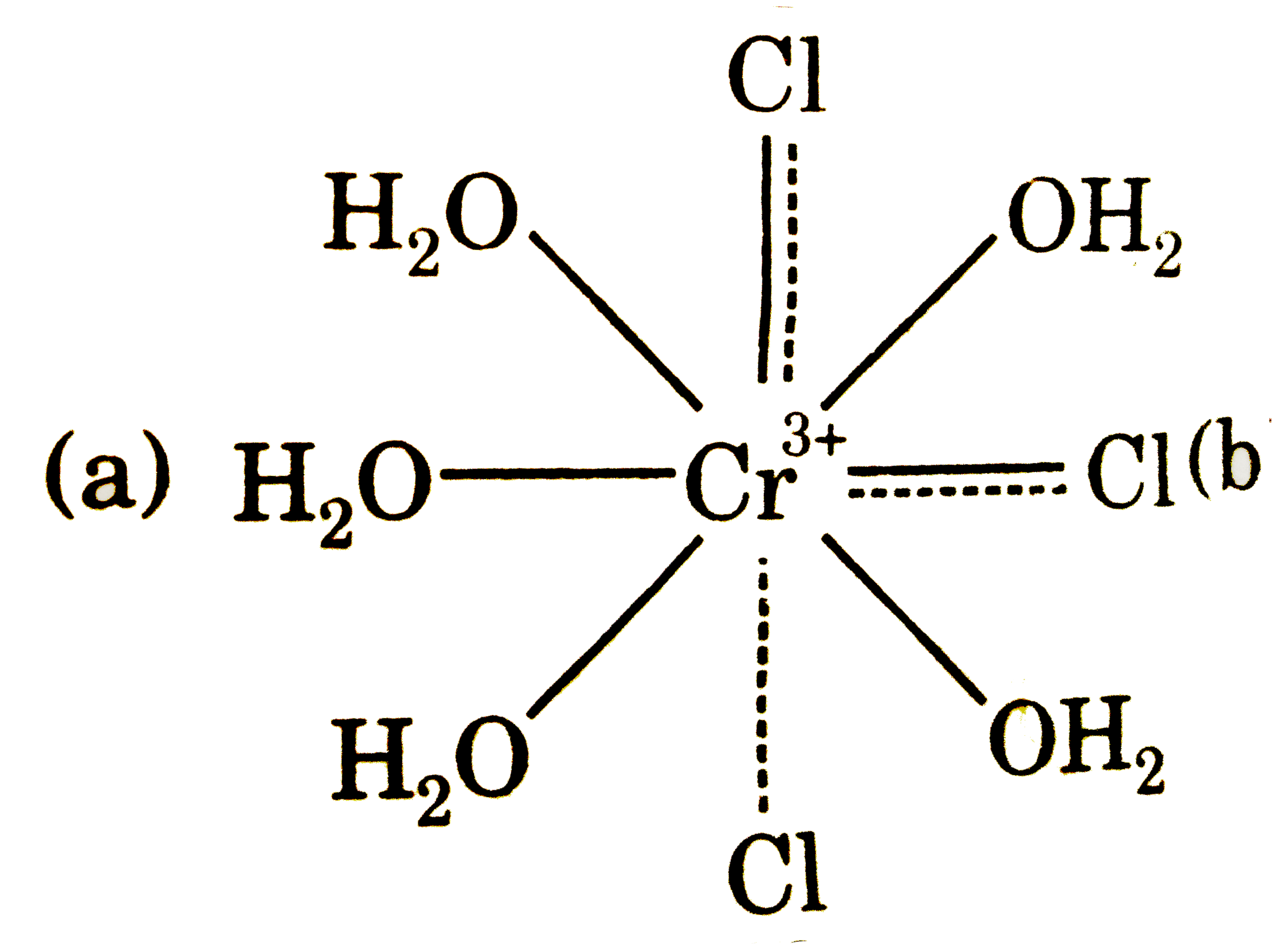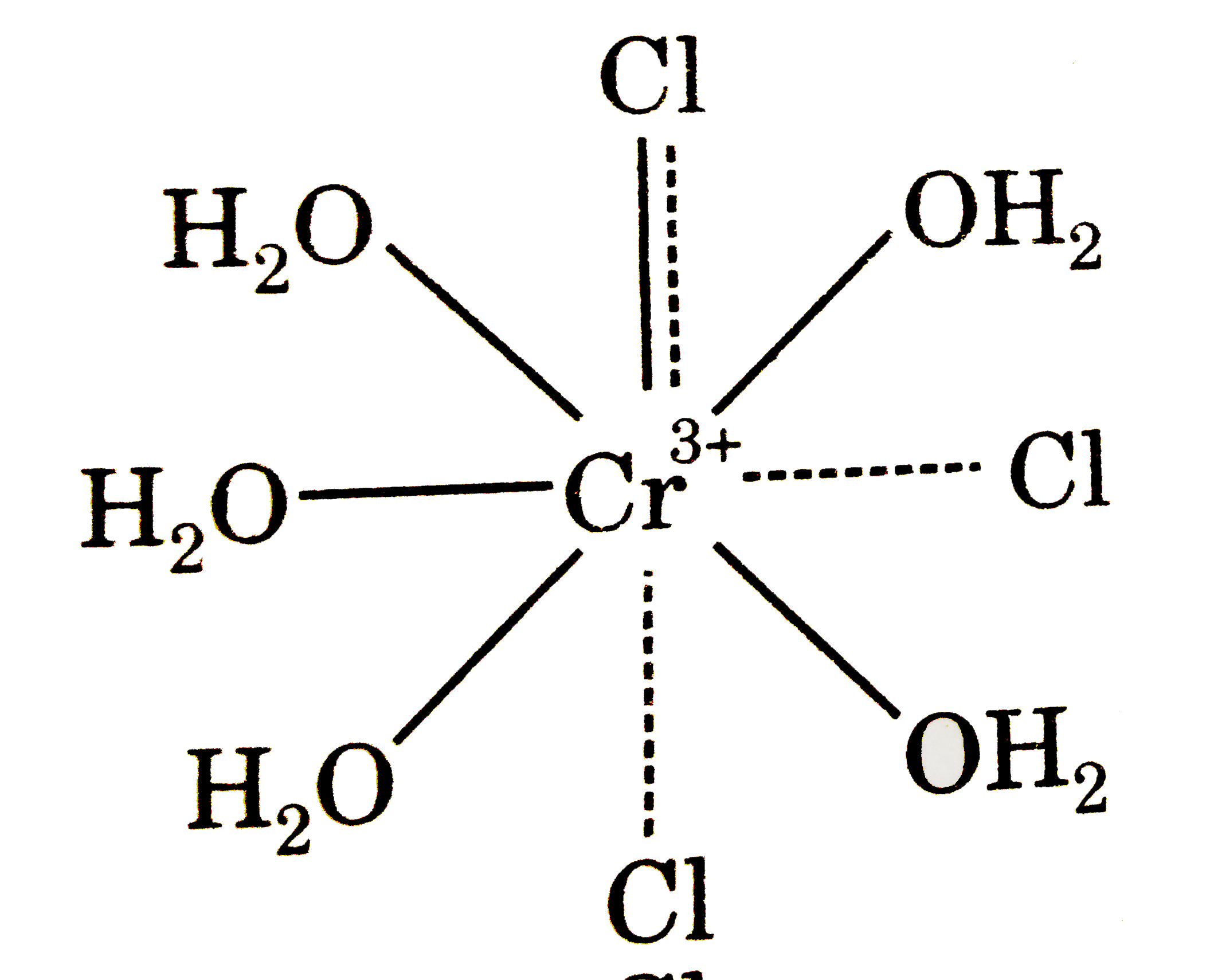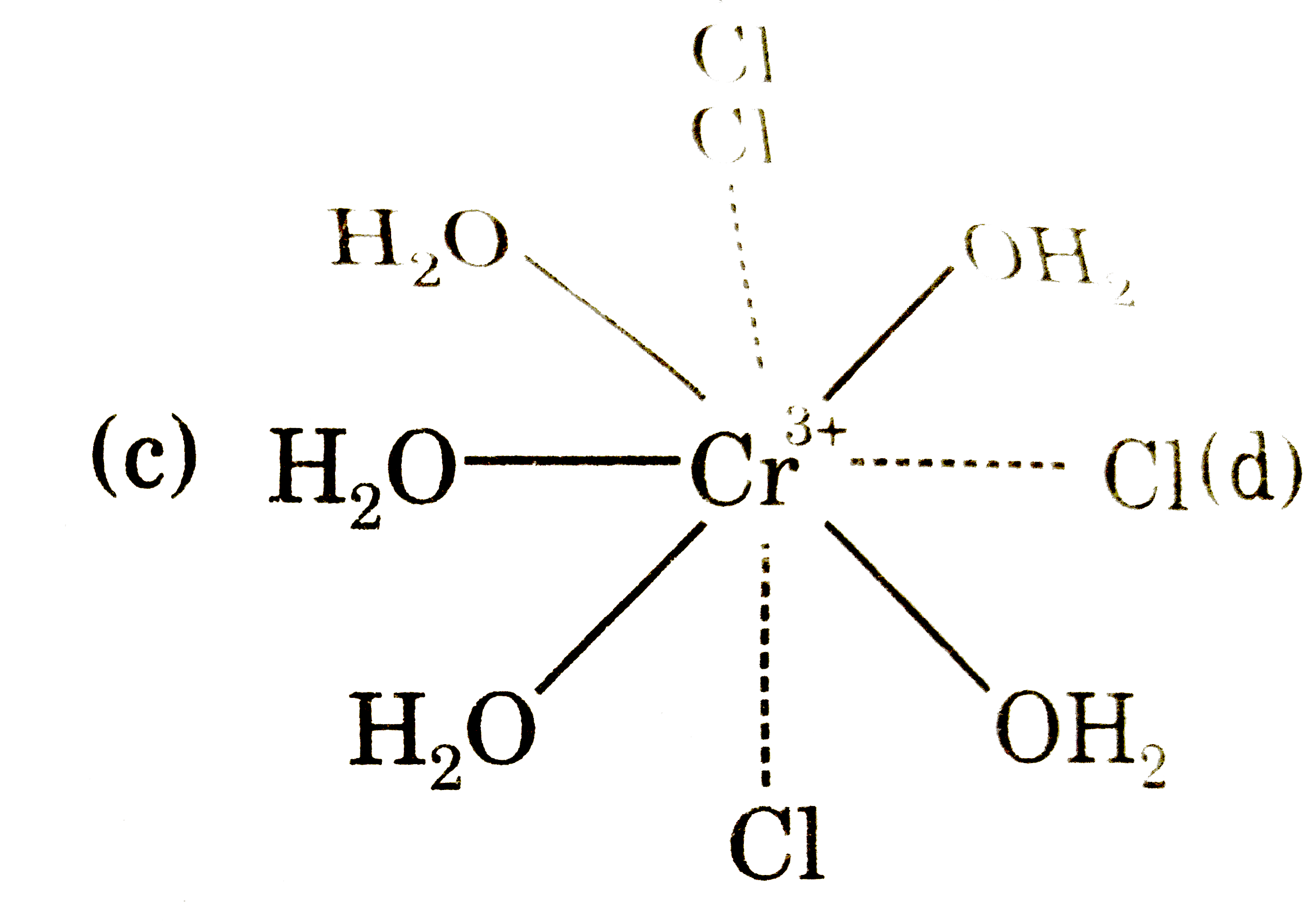and are three complexes of chromium(III) with the empirical formula All the three complexes not react with concentrated whereas complexes and lose and of their original mass respectively, on treatment on treatment with conectrated Identify and .
Video Solution
Text Solution
The data suggests that the complexes are hydrate isomers. As the complex A does not lose any molecle of on heating with conc. this means that no molecules of are Outside the co-ordinate sphere. The structure of the complex A is :
As B loses of weight on heating with conc. , therefore actual loss in weight.
= 6.75 / 100 266.5 = 18 amu
This means that the isomer B has one molecule of existing as monohdrate . [B] : .
As C loses 13.5% of weight on heating which is twice the loss in the first case, this shows that the isomer C exists as a dihydrate. [C] : .
|
Updated on:21/07/2023
Related Playlists
- BOOK - DINESH PUBLICATIONCHAPTER - CO-ORDINATION COMPOUNDS EXERCISE - Assignment76videos
CO-ORDINATION COMPOUNDS
- BOOK - DINESH PUBLICATIONCHAPTER - CO-ORDINATION COMPOUNDS EXERCISE - Select the correct answers137videos
CO-ORDINATION COMPOUNDS
- BOOK - DINESH PUBLICATIONCHAPTER - CO-ORDINATION COMPOUNDS EXERCISE - Questions from board examinations94videos
CO-ORDINATION COMPOUNDS
- BOOK - DINESH PUBLICATIONCHAPTER - CHEMISTRY IN EVERY DAY LIFEEXERCISE - Unit test-950videos
CHEMISTRY IN EVERY DAY LIFE
- BOOK - DINESH PUBLICATIONCHAPTER - CYANIDES, ISOCYANIDES, NITROCOMPOUNDS AND AMINESEXERCISE - Unit test - 820videos
CYANIDES, ISOCYANIDES, NITROCOMPOUNDS AND AMINES
Knowledge Check
- Question 1 - Select One
A,B and C are three complexes of chromium(III) with the empirical formula H12O6C13Cr All the three complexes not react with concentrated H2SO4 whereas complexes B and C lose 6.75% and 13.5% of their original mass respectively, on treatment on treatment with conectrated H2SO4 Identify A,B and C .
A[Cr(H2O)4Cl2].2H2OB[Cr(H2O)5Cl]Cl2.H2OC[Cr(H2O)3Cl3].3H2OD[Cr(H2O)6]Cl3 - Question 1 - Select One
A,B and C are three complexes of chromium(III) with the empirical formula H12O6C13Cr All the three complexes not react with concentrated H2SO4 whereas complexes B and C lose 6.75% and 13.5% of their original mass respectively, on treatment on treatment with conectrated H2SO4 Identify A,B and C .
A[Cr(H2O)4Cl2]Cl.2H2OB[Cr(H2O)3Cl3].3H2OC[Cr(H2O)5Cl]Cl2.H2OD[Cr(H2O)6]Cl3 - Question 1 - Select One
A, B and C are three complexes of chromium (III) with the empirical formula H12O6Cl3Cr. All the three complexes have water and chloride ion as ligands. Complex A does not react with concentrated H2SO4, whereas complexes B and C lose 6.75% and 13.5% of their original weight, respectively, on treatment with concentrated H2SO4.
According to the Werner theory, the structure of complex A is represented by :A[Cr(H2O)4(H)4(O)2]Cl3B[Cr(H2O5)5(H)2(O)]Cl3C[Cr(H2O)6]Cl3D[Cr(H2O)5Cl]Cl2.H2O - Question 1 - Select One
A, B and C are three complexes of chromium (III) with the empirical formula H12O6Cl3Cr. All the three complexes have water and chloride ion as ligands. Complex A does not react with concentrated H2SO4, whereas complexes B and C lose 6.75% and 13.5% of their original weight, respectively, on treatment with concentrated H2SO4.
Complexes A, B and C are not distinguished by:Amolar conductivity dataBby using P4O10Cqualitative test by AgNO3Dquantitative test by AgNO3 - Question 1 - Select One
A, B and C are three complexes of chromium (III) with the empirical formula H12O6Cl3Cr. All the three complexes have water and chloride ion as ligands. Complex A does not react with concentrated H2SO4, whereas complexes B and C lose 6.75% and 13.5% of their original weight, respectively, on treatment with concentrated H2SO4.
Complexes A, B and C are not distinguished by:Amolar conductivity dataBby using P4O10Cqualitative test by AgNO3Dquantitative test by AgNO3 - Question 1 - Select One
A, B and C are three complexes of chromium (III) with the empirical formula H12O6Cl3Cr. All the three complexes have water and chloride ion as ligands. Complex A does not react with concentrated H2SO4, whereas complexes B and C lose 6.75% and 13.5% of their original weight, respectively, on treatment with concentrated H2SO4.
Which type of isomerism is possible in complex C?AGeometricalBHydrationCCo-ordnationDBoth (a) and (b) - Question 1 - Select One
A, B and C are three complexes of chromium (III) with the empirical formula H12O6Cl3Cr. All the three complexes have water and chloride ion as ligands. Complex A does not react with concentrated H2SO4, whereas complexes B and C lose 6.75% and 13.5% of their original weight, respectively, on treatment with concentrated H2SO4.
Which type of isomerism is possible in complex C?AGeometricalBHydrationCCo-ordnationDBoth (a) and (b) - Question 1 - Select One
A, B and C are three complexes of chromium (III) with the empirical formula H12O6Cl3Cr. All the three complexes have water and chloride ion as ligands. Complex A does not react with concentrated H2SO4, whereas complexes B and C lose 6.75% and 13.5% of their original weight, respectively, on treatment with concentrated H2SO4.
According to the Werner theory, the structure of complex A is represented by :A B
B C
C D
D
- Question 1 - Select One
A, B and C are three complexes of chromium (III) with the empirical formula H12O6Cl3Cr. All the three complexes have water and chloride ion as ligands. Complex A does not react with concentrated H2SO4, whereas complexes B and C lose 6.75% and 13.5% of their original weight, respectively, on treatment with concentrated H2SO4.
According to the Werner theory, the structure of complex A is represented by :A B
B C
C D
D

